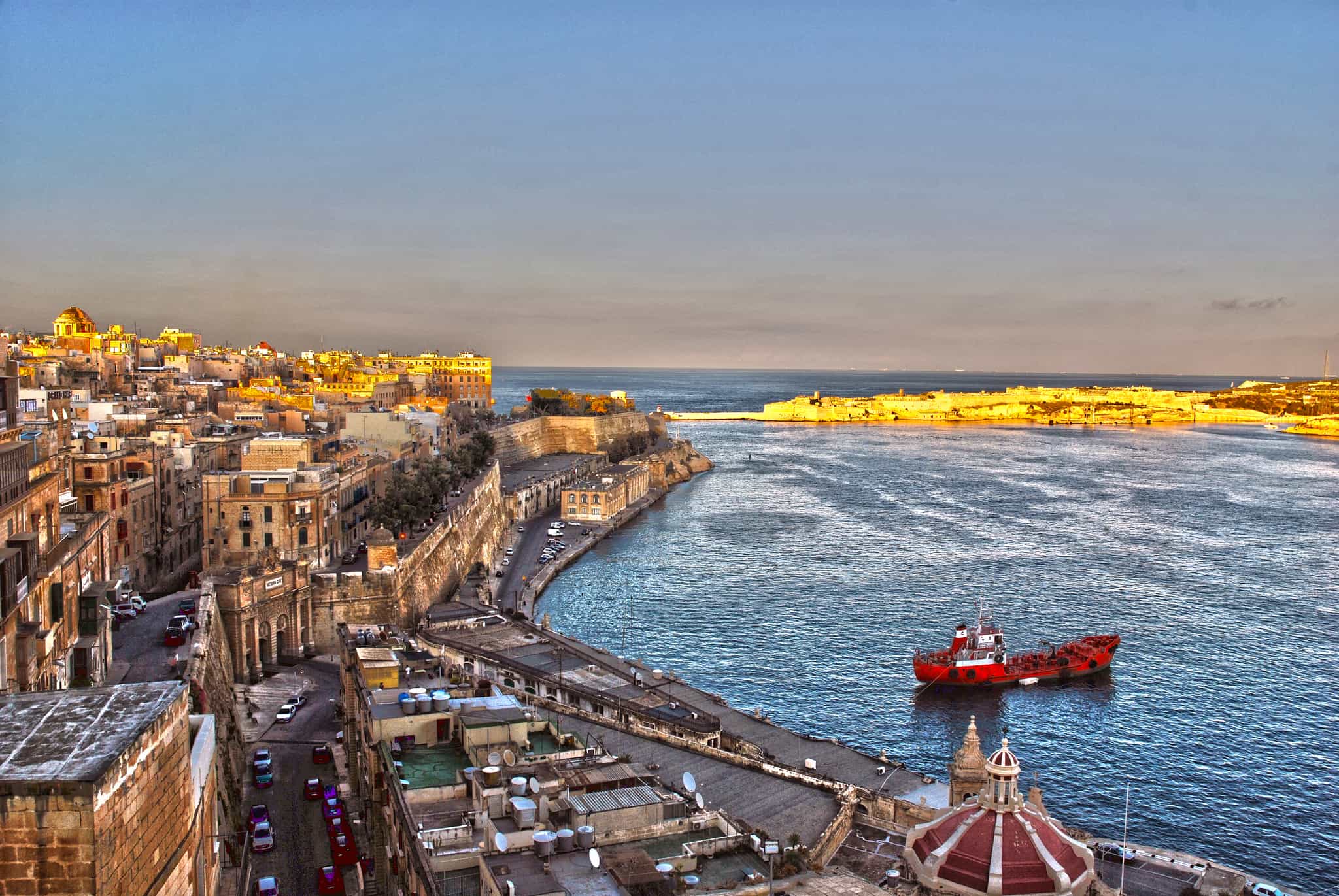A small island nation in the Mediterranean Sea, Malta has only 316 sq km of land mass and a population just short of half a million. It’s a strategic place for naval powers and has been conquered by a succession of powerful countries interested in using the islands to hold military forces. Given that it’s major importance was its coastline, the interior of Malta was left largely untouched by conflicts and has some of the best historic sites in Europe.
Valetta
 https://www.flickr.com/photos/ben124/
https://www.flickr.com/photos/ben124/
The capital of Malta is almost a history lesson by itself with buildings that date from the 16th century through modern times. Much of the city is Baroque but there are clear elements of Mannerist and Neo-Classical among the modern structures. Add in a few scars from World War II and you have a city so unique that UNESCO describes Valetta as “one of the most concentrated historic areas in the world”.
Most of the older parts of Valetta were built while under the rule of Knights Hospitalier, also called the Order of St. John of Jerusalem, and much of the flavor of the architecture is due to that influence. It was named for the Grand Master of the order Jean de Vallette who requested and received substantial monetary assistance from European royalty. His tomb lies with other Grand Masters of the Knights of Malta in St. John’s Co-Cathedral.
Mdina
 https://www.flickr.com/photos/neilsingapore/
https://www.flickr.com/photos/neilsingapore/
Once the capital of Malta, Mdina is a walled city located in the middle of the island and still has a resident population of about 300 people. It borders with the nearby village of Rabat that was once a suburb of the city and now outnumbers the residents of Mdina by more than 10,000.
There is evidence of settlements in the city going back to 4000 BC although the main fortification was likely done by the Phoenicians around 700 BC. The Romans also took advantage of the city’s high elevation and located the governor’s palace within the walls. Surprisingly though, it was the Arabs that built the defensive fortifications and wide moat, separating the town from the surrounding area.
Today the few residents live in the palaces and many of the other buildings are empty. The only vehicles allowed in the city are for emergencies, weddings and funerals earning Mdina the nickname of “The Silent City”.
Ggantija
 https://www.flickr.com/photos/47309201@N02/
https://www.flickr.com/photos/47309201@N02/
Located on the island of Gozo, the megalithic temples are older than the Egyptian pyramids and were constructed sometime around 3000 BC. They are the second oldest religious structures in the world and are believed to have been used by a fertility cult. Numerous figurines found on the site are connected with the fertility cult, but local folklore tells the story of a giantess who bore the child of a common man and built the temples as a place of worship.
Whether built by a giantess or man, the temples are very well preserved for being 5000 years old and the details of the construction are amazing considering the lack of metal tools and no evidence that the wheel was in use on the island. Although six separate megalithic temples are listed by UNESCO, Ggantija is one of the best.
Hypogeum of Hal-Saflieni
 https://www.flickr.com/photos/gertrudk/
https://www.flickr.com/photos/gertrudk/
Possibly first built as a sanctuary, the subterranean structure was converted to a necropolis before recorded history and has been the resting place of more than 7,000 individuals for nearly 5,000 years. The only underground temple in the world, the Hypogeum is constructed of three separate levels, the first only tem metres below the surface.
The second level was created when the first was no longer sufficient and has several important rooms. The Oracle Room is a small side chamber off the Main Chamber and is amazingly acoustic, producing resonance from any sound made within the chamber. The Decorated Room has a number of red ochre spirals painted on the ceiling and the Snake Pit is a two metre pit that may have been used for snakes, or possibly just collecting alms. The third level is simple and was likely used for storage of grain.
Mgarr
 https://www.flickr.com/photos/fchmksfkcb/
https://www.flickr.com/photos/fchmksfkcb/
The small, rural village has several sights to offer visitors. Ta’ Hagrat is one of the Megalithic temples listed by UNESCO and the two temples date from between 3600 and 3000 BC with the larger being older. It’s built on the site of a much older civilization and is smaller than many of the other temples in the country.
Ta’ Skorba is a third Neolithic temple and wasn’t excavated until the 1960s. The temple is in poor condition but careful digging is revealing not only the temple but the village that stood on the site some 12 centuries earlier.
A hand-dug World War II bomb shelter is near Mgarr and is one of the largest and best-preserved shelters of its type.


